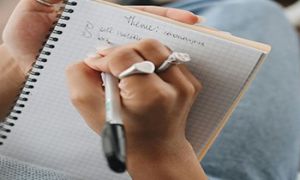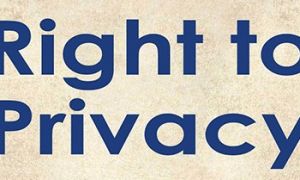The "All About Me" theme is a fantastic way for toddlers to explore their individuality and learn more about themselves. The following article provides All About Me Theme Activity Ideas, Importance Of All About Me Theme, Goals For All About Me Theme, Linking To The EYLF and more.
All About Me Theme Activity Ideas
"All About Me" activities are wonderful for toddlers to explore their individuality while developing their social and cognitive skills. Here are a few engaging and fun ideas:
-
Handprint Art: Use washable paint to let toddlers create handprints on paper. You can turn these into different animals or objects and write their name below each one.
-
My Family Portrait: Provide them with large paper and crayons to draw pictures of their family. This helps them understand family roles and relationships.
-
Self-Portrait Collage: Give them magazines, scissors, and glue to create a collage that represents themselves. They can choose pictures of things they like, their favorite colors, etc.
-
All About Me Book: Create a simple book with pages like “My name is…”, “I am… years old”, “I like to eat…”, “My favorite toy is…”. They can draw or paste pictures on each page.
-
Height Chart: Measure their height and let them mark it on a wall chart. You can also let them decorate their own height chart.
-
Favourite Things Box: Have toddlers bring a small box with their favorite things and share it with the group. This helps build confidence and communication skills.
-
Mirror Play: Provide unbreakable mirrors and let the toddlers look at themselves. Encourage them to make different expressions and talk about what they see.
-
My Favorites Rainbow: Draw a large rainbow and label each color with different prompts like favorite food, favorite animal, etc. Let the toddlers add their answers to each section of the rainbow.
-
My Name Collage: Provide large letters cut out of cardboard that spell their name. Let toddlers decorate each letter with stickers, drawings, or collage materials.
- Emotion Masks: Use paper plates and craft materials to make masks representing different emotions (happy, sad, angry, surprised). Toddlers can then role-play or talk about times they felt these emotions.
- Favourite Foods Chart: Create a chart with images of different foods. Toddlers can mark or color their favorites. It's a great way to learn about preferences and practice making choices.
- Dress Up Corner: Set up a corner with various costumes and accessories. Encourage toddlers to dress up and pretend to be different people. This helps them explore roles and self-expression.
- Personalized Puzzles: Print out a photo of the toddler, then cut it into puzzle pieces. Toddlers can put together their own face, which is both fun and confidence-building.
- Memory Box: Create a box where toddlers can store small items that are special to them, like a favorite rock, a small toy, or a photo. They can share why each item is important.
- Body Tracing: Have toddlers lie down on a large sheet of paper and trace around their body. They can then color and decorate the outline, adding details like clothes and facial features.
- Self-Introduction Song: Create a simple song that includes each toddler's name and something they like. Sing it together as a group to help everyone learn about each other.
- Role-Playing: Set up different scenarios (like a doctor's office, a grocery store, etc.) and let toddlers take turns playing different roles. This helps them understand different aspects of their community and themselves.
- Life-Sized Me: Use a roll of butcher paper to make life-sized cutouts of the toddlers. Let them decorate these cutouts with their favorite colors, clothes, and items that represent them.
- Role-Play Stations: Set up different role-play areas with costumes and props. For example, a "home" corner with kitchen toys, a "doctor's office" with medical kits, or a "grocery store" with play food. This allows toddlers to explore different roles and express themselves.
- Loose Parts Play: Provide a variety of loose parts like buttons, beads, fabric scraps, and natural materials like sticks and stones. Toddlers can use these to create self-portraits, build favorite things, or make anything they can imagine.
- Storytelling with Puppets: Create or provide puppets that represent the toddlers themselves, their family members, and friends. They can use these puppets to tell stories about their lives, their likes, and their daily activities.
- Sensory Bins: Fill bins with different materials like sand, water, rice, or beans. Include items related to the "All About Me" theme, such as small mirrors, family pictures laminated for durability, and objects representing their favorite things.
- Art and Craft Center: Set up an area with various art supplies like crayons, markers, glue, and paper. Encourage toddlers to create artworks that represent themselves, their family, or things they enjoy.
- Building Blocks: Provide blocks of different shapes and sizes. Toddlers can build structures that represent their homes, favorite places, or things they love.
- Music and Dance: Create a music area with instruments and a space to dance. Toddlers can express themselves through music and movement, showing off their unique styles and preferences.
- Nature Exploration: Take the toddlers outside for a nature walk. Provide magnifying glasses and small containers for collecting interesting items. They can bring these back and use them in art projects or sensory play.
- Photo Albums: Give each toddler a small photo album. Encourage parents to provide photos of family, pets, and favorite activities. Toddlers can look through their albums and share stories with their peers.
- Photo Booth: Set up a mini photo booth with props and costumes. Toddlers can take turns dressing up and taking pictures. They can then create a scrapbook or a gallery wall with their photos.
- Interactive Story Boards: Provide a felt board or a magnetic board with various pieces representing family members, pets, and favorite things. Toddlers can create and tell stories about themselves and their families.
- Personalized Playdough Mats: Create playdough mats with outlines of their names or favorite things. Toddlers can use playdough to fill in the outlines, which helps with fine motor skills and letter recognition.
- Nature Collage: Take a nature walk and collect items like leaves, flowers, and sticks. Toddlers can use these natural materials to create a collage that represents their favorite outdoor activities.
- Favorite Colour Sorting: Provide a variety of objects in different colors and let toddlers sort them into groups of their favorite colors. This activity helps with color recognition and sorting skills.
- Family Puppets: Use socks or paper bags to create puppets representing family members. Toddlers can use these puppets to act out daily routines and family interactions.
- Sensory Pathways: Set up a sensory pathway using different textures and materials (e.g., bubble wrap, fabric, foam). Toddlers can walk along the pathway and talk about how each texture feels.
- Self-Discovery Treasure Hunt: Hide small mirrors, family photos, or items representing their favorite things around a designated play area. Toddlers can go on a treasure hunt to find these items and talk about what they mean to them.
- Favorite Animal Craft: Provide materials for creating crafts of their favorite animals. They can use paper plates, construction paper, and other craft supplies to make animal masks or puppets.
- Music and Movement: Set up a music station with instruments and let toddlers create their own music. Encourage them to dance and move to the beat, expressing themselves through music and movement.
- Self-Portraits
Materials Needed: Paper, crayons, markers, mirrors.
Activity: Have children look at themselves in a mirror and draw a self-portrait. Encourage them to notice details like hair color, eye color, and any unique features. - Family Tree
Materials Needed: Construction paper, photos of family members, glue, markers.
Activity: Help children create a family tree by gluing photos of their family members on a piece of construction paper. They can also draw pictures of their family members if photos are not available.
- My Favorite Things
Materials Needed: Paper, crayons, markers.
Activity: Ask children to draw or talk about their favorite food, toy, activity, or place. This helps them express their preferences and share them with others. - Me Book
Materials Needed: Paper, markers, glue, photos.
Activity: Create a small booklet where each page represents something about the child. Pages can include "My Name," "My Family," "My Favorite Things," and "When I Grow Up." - All About Me Collage
Materials Needed: Magazines, scissors, glue, construction paper.
Activity: Children can cut out pictures from magazines that represent themselves and glue them onto a piece of construction paper to create a collage. - Body Tracing:
Materials Needed: Large paper, markers.
Activity: Have children lie down on a large piece of paper, trace their bodies, and then decorate the outline with drawings of their clothes, favorite colors, or patterns. - Emotion Faces
Materials Needed: Paper plates, markers, craft sticks.
Activity: Draw different facial expressions on paper plates (happy, sad, angry, surprised). Attach a craft stick to each plate. Discuss different emotions and when they might feel each one. - Sharing Circle
Materials Needed: None.
Activity: Sit in a circle and take turns sharing something about themselves. It could be their name, favorite color, or something they did over the weekend.
- My Name Art
Materials Needed: Paper, markers, glitter, stickers.
Activity: Have the children decorate their names with various art supplies. They can use glitter, stickers, and colorful markers to make their names stand out. - Shoe Matching Game
Materials Needed: Shoes from each child.
Activity: Have a pile of shoes and ask the children to find and match their shoes. It's a fun way to talk about individuality and personal belongings. - Story Time with Photos
Materials Needed: Photos of children, construction paper, markers.
Activity: Create a simple storybook with each child's photo. Each page can tell a part of their story, like "I live in a big house," or "I like to play with my cat." - My Favourite Song
Materials Needed: None.
Activity: Ask each child to share their favorite song. Play the songs and have a mini dance party. It's a great way to share personal preferences and enjoy music together. - Height Chart
Materials Needed: Paper, markers, a measuring tape.
Activity: Create a height chart and measure each child. Mark their heights on the chart and let them decorate it with their names and drawings. - Memory Box
Materials Needed: Small boxes, paper, markers, trinkets.
Activity: Have children collect small items that are important to them and place them in a memory box. They can decorate the box and share the contents with the group. - Sensory Bottles
Materials Needed: Empty plastic bottles, water, glitter, beads, small toys.
Activity: Help children create sensory bottles by filling them with water and various small objects. They can choose items that represent their favorite colors or interests. - My Dream House
Materials Needed: Construction paper, markers, crayons, glue.
Activity: Have children draw or build a model of their dream house. They can talk about what makes their house special and what they would include in it. - Friendship Bracelets
Materials Needed: Beads, string.
Activity: Have children make friendship bracelets for themselves or their friends. This activity promotes fine motor skills and the concept of friendship. - My Favourite Animal
Materials Needed: Paper, markers, toy animals.
Activity: Ask children to draw or bring a toy of their favorite animal. They can share why they like the animal and any fun facts they know about it.
- My World Collage
Materials Needed: Magazines, scissors, glue, construction paper.
Activity: Have children create a collage that represents their world. They can cut out pictures from magazines that depict their favorite things, people, and places. There's no right or wrong way to create their collage. - Free Drawing Time
Materials Needed: Paper, crayons, markers, colored pencils.
Activity: Provide a variety of drawing materials and let children draw anything they want about themselves. This could include their family, pets, favorite activities, or dreams. - Story Stones
Materials Needed: Smooth stones, markers, paint.
Activity: Have children decorate stones with symbols or pictures that represent different aspects of their lives. They can then use the stones to tell stories about themselves. - Dress-Up and Role Play
Materials Needed: Costumes, hats, scarves, various clothing items.
Activity: Set up a dress-up corner where children can choose different costumes and role-play different characters or professions. This allows them to express different parts of their identity and imagination. - Sensory Bins
Materials Needed: Large bins, various sensory materials (sand, rice, water beads), small toys, scoops, and containers.
Activity: Create sensory bins that represent different aspects of a child's life. For example, a bin could include items related to their favorite outdoor activity or a special family tradition. - Journaling
Materials Needed: Journals or notebooks, markers, crayons.
Activity: Encourage children to keep a journal where they can draw pictures or have an adult help them write about their daily experiences, feelings, and thoughts. - My Favourites Box
Materials Needed: Small boxes, various art supplies (stickers, markers, paint).
Activity: Have children decorate a box and fill it with objects that are special to them, like favorite toys, drawings, or small keepsakes. They can share the contents with the group. - Outdoor Exploration
Materials Needed: None.
Activity: Take the children on a nature walk and ask them to collect items that interest them, like leaves, flowers, or rocks. Back in the classroom, they can create a display or art project with their findings. - Build a Fort
Materials Needed: Blankets, pillows, chairs, and other fort-building materials.
Activity: Let children build a fort and use it as a personal space where they can play, read, or relax. They can decorate their fort and make it their own special place.
Importance Of All About Me Theme
1. Self-Awareness:
- Builds Identity: It helps children start to form their own identity and understand who they are, their likes and dislikes, and what makes them unique.
- Self-Expression: Children learn to express their feelings, thoughts, and experiences through various activities, fostering confidence and self-expression.
- Understanding Others: By learning about themselves, children also begin to understand and appreciate differences and similarities with their peers.
- Communication: It encourages children to share about themselves, listen to others, and engage in conversations, which enhances their communication skills.
- Recognizing Emotions: Activities that involve discussing and expressing feelings help children recognize and manage their emotions better.
- Empathy: Understanding their own emotions helps children develop empathy towards others and build stronger social bonds.
- Critical Thinking: Activities that involve reflection and self-exploration encourage critical thinking and decision-making skills.
- Memory Skills: Remembering details about themselves and their experiences helps improve memory and cognitive abilities.
- Artistic Expression: Many "All About Me" activities involve art and craft, allowing children to express themselves creatively.
- Imagination: Activities like role-playing and storytelling foster imagination and creativity.
- Celebrating Diversity: It promotes inclusivity by celebrating each child's uniqueness, helping them feel valued and respected.
- Cultural Awareness: Children learn about different family structures, traditions, and backgrounds, fostering cultural awareness and acceptance.
- Vocabulary Building: Discussing personal experiences and preferences helps children build a rich vocabulary.
- Language Skills: Engaging in conversations and storytelling improves language and literacy skills.
-
Positive Self-Image: Completing activities that highlight their strengths and achievements boosts children's self-esteem.
-
Feeling Valued: When children see that their experiences and feelings are important, they feel valued and respected.
Goals For All About Me Theme
The "All About Me" theme has several key goals that contribute to the holistic development of toddlers and preschoolers. These goals include:
1. Self-Awareness:
-
Recognize Identity: Helping children understand and recognize their own identity, including their name, age, family, and unique characteristics.
-
Personal Preferences: Encouraging children to identify and express their likes, dislikes, and personal preferences.
2. Emotional Development:
-
Emotion Recognition: Assisting children in recognizing and naming their emotions and understanding how to express them appropriately.
-
Self-Esteem: Building confidence and self-esteem by celebrating each child's uniqueness and accomplishments.
3. Social Skills:
-
Communication: Enhancing verbal and non-verbal communication skills by encouraging children to share about themselves and listen to others.
-
Empathy: Fostering empathy and understanding by recognizing similarities and differences among peers.
4. Cognitive Development:
-
Critical Thinking: Promoting critical thinking and reflection by engaging children in activities that require them to think about themselves and their experiences.
-
Memory Skills: Strengthening memory skills by recalling and discussing personal experiences and family details.
5. Creativity and Expression:
-
Artistic Expression: Encouraging creativity through various art and craft activities that allow children to express their individuality.
-
Imagination: Stimulating imagination and creativity through open-ended activities, role play, and storytelling.
6. Language Development:
-
Vocabulary Building: Expanding vocabulary by discussing personal experiences, emotions, and preferences.
-
Language Skills: Improving language skills through activities that involve speaking, listening, and sharing stories.
7. Inclusivity and Cultural Awareness:
-
Celebrating Diversity: Promoting inclusivity by celebrating each child's background, culture, and traditions.
-
Cultural Awareness: Enhancing cultural awareness and appreciation of diversity within the classroom.
8. Physical Development:
-
Fine Motor Skills: Developing fine motor skills through activities like drawing, cutting, and gluing.
-
Gross Motor Skills: Encouraging movement and physical activity through games and outdoor exploration.
9. Problem-Solving:
-
Decision Making: Helping children develop problem-solving and decision-making skills by allowing them to make choices in activities.
-
Goal Setting: Encouraging children to set personal goals and work towards achieving them.
Linking To The EYLF
The "All About Me" theme aligns well with the Early Years Learning Framework (EYLF) for Australia, which focuses on fostering children's learning and development from birth to five years old. Here are some ways the theme connects to the EYLF:
1. Outcome 1: Children have a strong sense of identity:
-
Activities like self-portraits, family trees, and personal stories help children develop a strong sense of identity and understand their own uniqueness.
2. Outcome 2: Children are connected with and contribute to their world:
-
Sharing personal experiences and preferences helps children feel connected to their community and understand their role within it.
3. Outcome 3: Children have a strong sense of wellbeing:
-
Emotion recognition activities and discussions about feelings support children's social and emotional wellbeing.
4. Outcome 4: Children are confident and involved learners:
-
Creative activities like drawing, storytelling, and role-playing encourage children to be confident and enthusiastic learners.
5. Outcome 5: Children are effective communicators:
-
Activities that involve speaking, listening, and sharing help children develop their communication skills and express their ideas.
By incorporating the "All About Me" theme, educators can create a supportive and engaging environment that promotes holistic development and aligns with the goals of the EYLF. This approach helps children build a strong foundation for future learning and social interactions.
Further Reading
All About Me
All About Me Banner Template
About Me Display
All About My Name
Version 2.0 EYLF Outcome 1 - Children Have A Strong Sense Of Identity V2.0


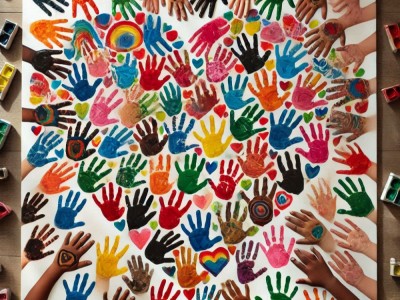



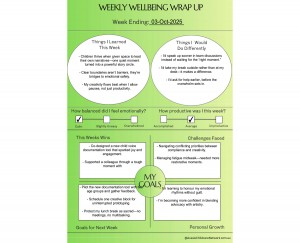
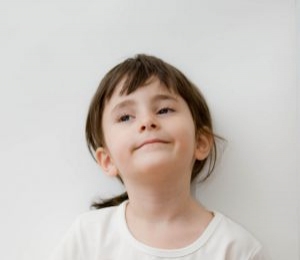 Open ended questions cannot be responded to with one word answers such as yes or no. These types of questions enables a child to provide
Open ended questions cannot be responded to with one word answers such as yes or no. These types of questions enables a child to provide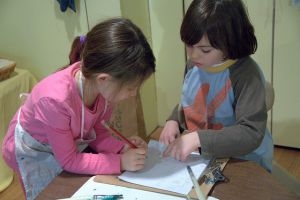 During your child’s preschool years, an important milestone begins to emerge. This is the development of pre-writing skills. Pre-writing skills are used to encourage, develop
During your child’s preschool years, an important milestone begins to emerge. This is the development of pre-writing skills. Pre-writing skills are used to encourage, develop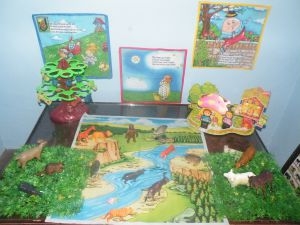 Open ended materials enables children to play freely. They are objects that have no rules to follow, use or function. Raw materials that can be
Open ended materials enables children to play freely. They are objects that have no rules to follow, use or function. Raw materials that can be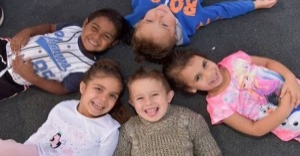 An Acknowledgment of the Country is a way of showing respect for the Traditional Owners and can be given by both non-Indigenous people and Aboriginal
An Acknowledgment of the Country is a way of showing respect for the Traditional Owners and can be given by both non-Indigenous people and Aboriginal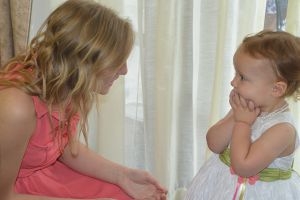 Language plays an important role in a child’s development. It enables a child to communicate effectively with their family, learn at school, socialize with friends,
Language plays an important role in a child’s development. It enables a child to communicate effectively with their family, learn at school, socialize with friends,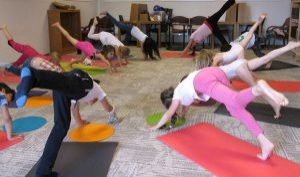 Like adults, children have to deal with their own stress in life. Moving house, starting a new school, preparing for a new sibling - these are
Like adults, children have to deal with their own stress in life. Moving house, starting a new school, preparing for a new sibling - these are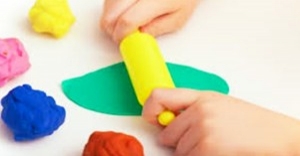 Playdough is such a versatile material. It provides numerous benefits to children as they manipulate it, it is safe and soothing and provides children with
Playdough is such a versatile material. It provides numerous benefits to children as they manipulate it, it is safe and soothing and provides children with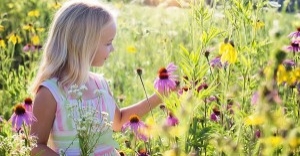 Teaching children about sustainability enables them to appreciate and respect the natural environment. Early childhood services can provide meaningful hand on learning experiences in order
Teaching children about sustainability enables them to appreciate and respect the natural environment. Early childhood services can provide meaningful hand on learning experiences in order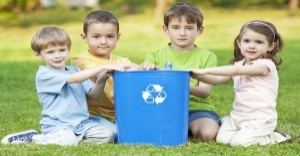 Recycling is an important concept that teaches children to care for the environment. It encourages children to be responsible and show a growing appreciating for
Recycling is an important concept that teaches children to care for the environment. It encourages children to be responsible and show a growing appreciating for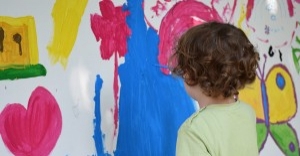 When children apply paint to paper, glue things together, or pound a lump of clay, they experiment with colour, shape design and texture.
When children apply paint to paper, glue things together, or pound a lump of clay, they experiment with colour, shape design and texture.
